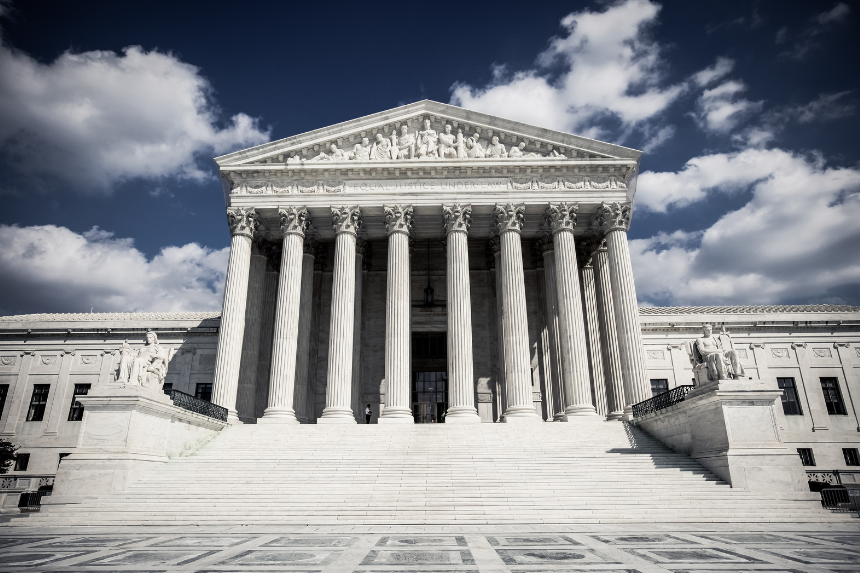Following a recent U.S. Supreme Court decision, the restriction on transgender military service once more becomes a hot topic of debate. While legal challenges proceed via lower courts, this ruling momentarily reinstates the divisive policy and permits its implementation. The decision has sparked once more discussions on military policy on inclusivity, national security, and constitutional rights.
Following his inauguration in January 2017, former President Donald Trump enacted several executive orders meant to limit transgender people’s military participation. Citing concerns over military fitness, unit cohesion, and expenditures related to gender-affirming healthcare, the Pentagon was instructed to apply a policy prohibiting transgender persons from serving openly. While detractors denounced the policy as discriminatory and a breach of equal rights, supporters claimed it was essential to keep the military functional.
Notwithstanding legal challenges—including a countrywide injunction imposed by a lower court—the Supreme Court’s ruling has let the ban on transgender military service stay in place momentarily. Extensive legal and political discussions on this policy still center on many stakeholders claiming that it compromises the rights of transgender people, while others contend that military discipline depends on it.
Why did the Supreme Court maintain the ban on transgender military service?
Soon after the transgender military service ban was adopted, many lawsuits challenging the policy were launched, starting the legal struggle over it. A federal judge in Washington state imposed a countrywide injunction in 2018, therefore stopping the ban and so impeding Pentagon efforts to enforce it. The judge decided that the government lacked sufficient proof proving transgender troops will compromise military readiness or the cohesiveness of military formations.
The Trump government contested the decision, contending that military leadership should be trusted to decide which policies would best preserve the operational capability of the armed forces. The legal team of the government argued that in terms of national defense policies, the courts should rely on the knowledge of military authorities.
While legal challenges to the policy persisted, the U.S. Supreme Court sided with the Trump administration in January 2019, therefore enabling the ban on transgender military service to take place. The Court did not decide unanimously. Dissenting, three justices, all chosen by Democratic presidents, claimed that the ruling would endanger transgender people and jeopardize military cohesiveness. Among LGBTQ+ activists and military personnel who contend the policy is detrimental and based more on prejudice than on valid military reasons, the decision has generated grave questions.
Who Questions the Policy and Why?
Advocacy groups and transgender service members have strongly objected to the restriction on transgender military service. Lambda Legal, which represents seven transgender servicemembers—including Navy fighter pilot Commander Emily Schilling—who contend that the policy violates their rights under the U.S. Constitution, is one of the main groups contesting the ban.
The plaintiffs have argued that the restriction compromises the readiness and capacities of the military by eliminating competent troops and discriminates against transgender people based on their gender identity. The plaintiffs further contend that rather than being based on factual military considerations, the policy is driven by baseless anxieties and preconceptions.
“The Supreme Court ruling today is a devastating blow to transgender servicemembers who have demonstrated their capabilities and commitment to our nation’s defense,” said a joint statement from Lambda Legal and the Human Rights Campaign Foundation, also representing the plaintiffs. “The Court has momentarily approved a policy that has nothing to do with military readiness and everything to do with prejudice by letting this discriminatory ban take effect while our challenge is still under process.”
The plaintiffs contend that despite proving their abilities, loyalty, and commitment, they are being unfairly denied the chance to serve their nation. They further underline that letting transgender people serve freely helps military readiness since it helps the armed forces to keep brilliant people ready to risk their lives for their country. Read another article on Statue Vandalism During Transgender Protest.
What wider consequences might the ban have?
The restriction on transgender military service is a component of a larger trend in legislative changes influencing transgender people throughout the United States. Apart from the military ban, the Trump government acted to restrict transgender people’s access to equality in many public services, legal recognition, and healthcare.
2017 saw one of the most notable developments when President Trump declared an executive order stating that the federal government will only acknowledge male and female genders as defined by the sex assigned at birth. For transgender Americans, especially in terms of documentation and legal rights, this choice had broad consequences.
The U.S. State Department, for example, declared that it would no longer let passport applicants choose “X” as their gender marker—a designation once made possible to nonbinary and gender-nonconforming people. Civil rights organizations such as the American Civil Liberties Union (ACLU) responded by launching lawsuits contesting this legislation.
The government also put policies limiting access to gender-affirming healthcare for transgender people, including young transgender people, into effect. These laws have drawn strong criticism for neglecting the medical needs of transgender people and for creating unwarranted roadblocks for those looking for gender-affirming treatment.
Another issue of dispute has been the Trump administration’s attempt to forbid transgender women from playing in women’s sports; opponents claim that these rules prohibit transgender people from engaging in sports and therefore support discrimination.
Regarding transgender troops and their rights, what comes next?
The legal fight is far from finished even if the Supreme Court’s decision keeps the ban on transgender military service momentarily in effect. The lawsuit is expected to keep moving through the lower courts, where the plaintiffs will keep contesting the constitution based policy. Argumentating that the policy is discriminatory and unsupported by credible data, advocacy groups are sure the court challenges will finally succeed in reversing the prohibition.
Transgender service personnel are being placed in a condition of ambiguity about their military future. While some transgender people have already been let go because of the policy, others are still serving even with the restriction. The case’s result will have long-term effects for the larger military community in addition to transgender service personnel.
What Should Future Rulings Exude?
The future of the transgender military service ban is yet unknown, while the legal challenges go on. The result of this case will probably establish a major precedent for both more general civil rights concerns as well as for the treatment of transgender military personnel. Should the lower courts eventually find in favor of the plaintiffs, this could indicate a move toward more military force inclusivity and respect for transgender people’s rights to serve their nation free from prejudice.
Should the ban be maintained, however, transgender service personnel may be subject to more stringent rules, therefore influencing recruiting, retention, and general military morale. The public debate on transgender rights and inclusivity in the military services will probably still revolve mostly around the continuous legal disputes.








